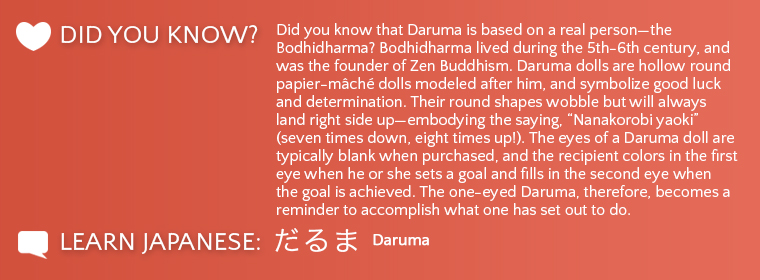


This purple papier-mâché Hime Daruma (Princess Daruma) doll is made in the Mingei (folk art) style by an artist named Matsumoto. The doll features white five-petaled flowers outlined in red and green and with yellow centers with five black streaks pointed upwards from the center. The flowers are painted all over the purple back and lower front portion of the Daruma doll. Her face has molded puffy cheeks and nose, and pink circles are painted just over the cheeks. A red strip of paint outlines the top of the face with black scalloped hair painted just below. Two gray circles are painted on either side of nose to represent her eyebrows, and her red heart-shaped lips are painted below the nose. A gold stripe of paint outlines the bottom of the face. Inside the doll is a bell.
A common variation on the traditional Daruma doll is the Princess Daruma (Hime Daruma) or Lady Daruma (Onna Daruma). This contrasts greatly with traditional representations of the Bodhidharma, on whom the Daruma doll is based, who has traditionally been depicted as very masculine with rough facial hair. During the widespread social changes of the Edo period (1600-1868), merchant class depictions of a feminine Daruma were intended as satire, to make fun of the samurai class; but the doll maintained the same wholesome image of a bringer of good luck. The evolution of the feminine Daruma into Hime Daruma evoked the ancient story of Emperor Ojin (r. 270-310), whose mother, Empress Jingu (r. 201-269), visited Dogo hot spring when she was pregnant to wish for a safe pregnancy and childbirth. Now Hime Daruma are frequently used as amulets for easy childbirth.